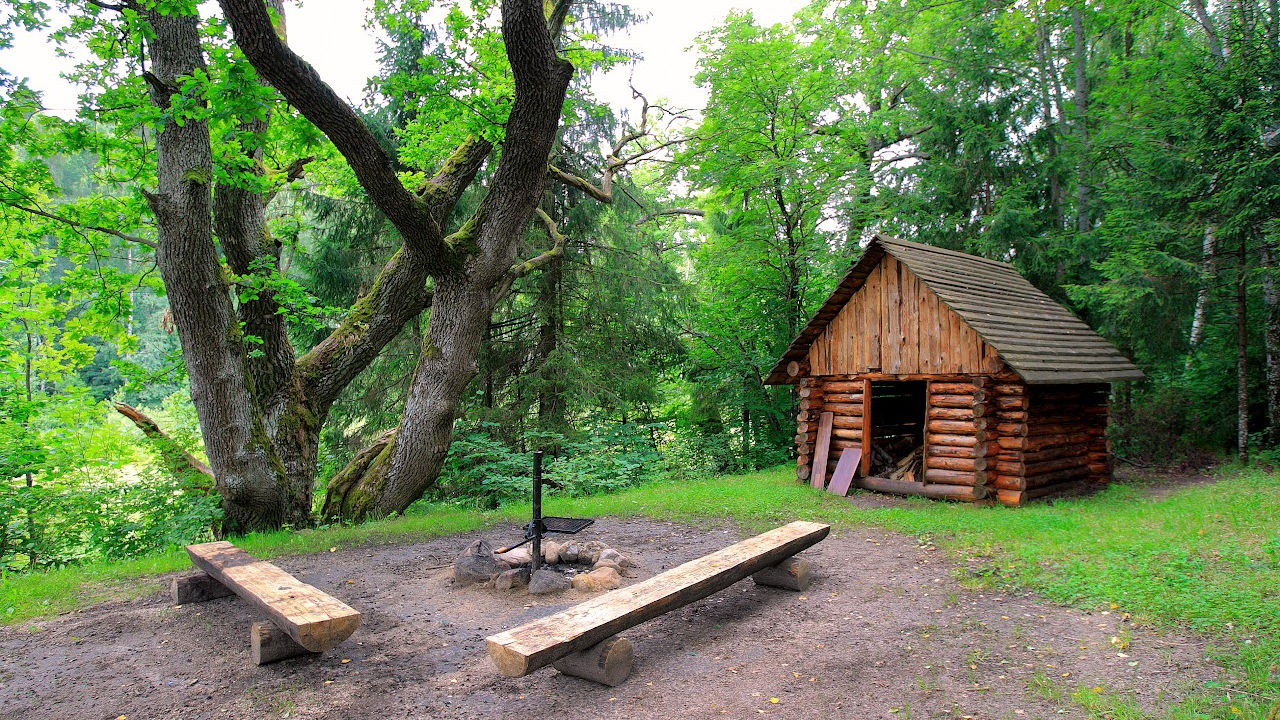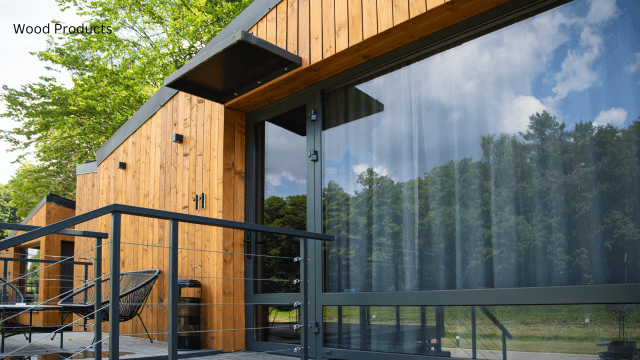As an avid outdoor enthusiast and someone who loves spending time in my backyard, having a firewood storage shed has proven to be an essential addition to my outdoor space. There are several reasons why you might consider building one too.
Firstly, a firewood storage shed provides protection and shelter for your firewood. Stacking firewood directly on the ground can lead to moisture retention, which can make it difficult to light and burn effectively. By storing your firewood in a shed, you can ensure that it remains dry and ready to use whenever you need it.
Secondly, a firewood storage shed helps to keep your outdoor space organized and clutter-free. Without a dedicated storage solution, firewood tends to accumulate in random piles, taking up valuable space and creating an untidy appearance. With a shed, you can neatly stack your firewood, making it easier to access and keeping your yard looking clean and well-maintained.
Finally, a firewood storage shed can also help to extend the lifespan of your firewood. By keeping it off the ground and allowing for proper airflow, you can prevent rot, mold, and insect infestations. This means that you’ll be able to enjoy your firewood for longer, without the need for frequent replacements.
Benefits of a DIY firewood storage shed
Building a firewood storage shed yourself comes with several benefits. Firstly, it allows you to customize the shed to suit your specific needs and preferences. You can choose the size, design, and materials that best match your outdoor space and personal style.
Secondly, building your own firewood storage shed can be a cost-effective option. By sourcing materials and doing the labor yourself, you can save money compared to purchasing a pre-made shed or hiring someone to build it for you. This makes it a great option for those on a budget or who enjoy DIY projects.
Additionally, constructing a firewood storage shed can be a rewarding and fulfilling experience. It provides an opportunity to showcase your craftsmanship and creativity while adding a practical and functional structure to your yard. Plus, you’ll have the satisfaction of knowing that you built it with your own two hands.
Choosing the right location for your firewood storage shed
When selecting the location for your firewood storage shed, there are a few key factors to consider. Firstly, you’ll want to choose a spot that is easily accessible. Ideally, it should be near your outdoor entertaining area or close to your home, so you don’t have to trek across the yard in inclement weather to retrieve firewood.
Secondly, you’ll want to ensure that the location provides proper ventilation and airflow. This will help to prevent moisture buildup and promote the drying of freshly cut or damp firewood. Avoid placing the shed in a low-lying area or in a spot that is prone to collecting water.
Additionally, it’s important to consider the aesthetics of your outdoor space. Choose a location that blends in with the overall design and landscaping of your yard. You may want to position the shed in a discreet corner or behind existing structures, such as a fence or garden shed, to maintain a cohesive and visually pleasing outdoor environment.
Design considerations for your DIY firewood storage shed
When designing your DIY firewood storage shed, there are a few important considerations to keep in mind. Firstly, you’ll want to determine the size of the shed based on the amount of firewood you typically use. Consider how much firewood you go through in a season and plan accordingly to ensure that you have enough storage space.
Secondly, think about the design and aesthetics of the shed. While functionality is key, you’ll also want the shed to complement your outdoor space. Choose a design that matches the style of your home and yard, whether it’s rustic, modern, or traditional. You can find a variety of shed plans and inspiration online to help you with the design process.
Additionally, consider the accessibility of the shed. Will you need to be able to easily load firewood into a wheelbarrow or carry it by hand from the shed to your fire pit or fireplace? Make sure to incorporate features such as ramps or wide doorways to accommodate the transportation of firewood.
Materials needed for building a firewood storage shed
To build your DIY firewood storage shed, you’ll need a few basic materials. The exact materials will depend on the design and size of your shed, but here are some common ones that you may need:
- Wood: Choose a sturdy and weather-resistant wood, such as cedar or pressure-treated lumber, for the frame and exterior of the shed.
- Roofing material: Consider using metal roofing or asphalt shingles to protect the firewood from rain and snow.
- Nails, screws, and other fasteners: These will be necessary for securing the various components of the shed together.
- Hinges and hardware: If your shed has doors or windows, you’ll need hinges and other hardware to install them.
- Waterproofing sealant: Apply a waterproofing sealant to protect the wood from moisture and decay.
Make sure to measure and calculate the exact quantities of each material you’ll need before starting the construction process. This will help you avoid any delays or additional trips to the hardware store.
Step-by-step guide on building your DIY firewood storage shed
Building your own firewood storage shed may seem like a daunting task, but with a step-by-step guide, it can be a manageable and rewarding project. Here’s a general outline of the construction process:
- Prepare the site: Clear the area where the shed will be located and level the ground if necessary.
- Build the foundation: Depending on your preference and the size of the shed, you can choose to build a concrete slab, use cinder blocks, or create a gravel base.
- Construct the frame: Cut the wood to the appropriate lengths and assemble the frame of the shed, ensuring it is level and square.
- Install the walls and roof: Attach the exterior panels to the frame and then add the roof, making sure to properly waterproof it.
- Add doors and windows: If desired, install doors and windows using the appropriate hinges and hardware.
- Apply finishing touches: Sand any rough edges, paint or stain the shed, and add any additional decorative elements.
Remember to consult detailed plans and instructions specific to your chosen design to ensure that you complete each step accurately and safely.
Safety precautions when building a firewood storage shed
When embarking on any DIY construction project, safety should always be a top priority. Here are some important safety precautions to keep in mind when building a firewood storage shed:
- Wear protective gear: Always wear safety glasses, gloves, and appropriate footwear to protect yourself from potential injuries.
- Use proper tools: Make sure to use the correct tools for each task and keep them in good working condition.
- Follow instructions: Carefully read and follow the instructions provided by the manufacturer or the plans you are using.
- Work in a well-ventilated area: If you’re using paint, stain, or sealant, make sure the area is well-ventilated to avoid inhaling harmful fumes.
- Take breaks: DIY projects can be physically demanding, so remember to take regular breaks and stay hydrated.
By taking these precautions, you can ensure a safe and enjoyable building experience.
Tips for organizing and maintaining your firewood storage shed
Once your DIY firewood storage shed is complete, it’s essential to organize and maintain it properly to maximize its functionality. Here are some tips to help you keep your shed in top condition:
- Stack firewood properly: Stack the firewood in a neat and orderly manner, allowing for proper airflow between the logs. This will aid in the drying process and prevent mold and rot.
- Rotate the stock: When adding new firewood to the shed, make sure to place it behind the existing stock. This way, you’ll always be using the oldest wood first, ensuring that it remains dry and ready to burn.
- Keep the shed clean: Regularly sweep out any debris or dirt that may accumulate in the shed. This will help prevent pests and maintain a clean storage environment.
- Inspect for damage: Periodically inspect the shed for any signs of damage or wear. Repair any loose boards or damaged areas promptly to prevent further deterioration.
- Apply regular maintenance: Depending on the type of wood used, you may need to apply a fresh coat of sealant or paint every few years to protect it from the elements.
Other creative uses for your DIY firewood storage shed
While the primary purpose of your DIY firewood storage shed is to store firewood, there are also other creative ways you can utilize the space. Here are a few ideas:
- Outdoor storage: If you have limited storage space in your home or garage, you can use the shed to store other outdoor items such as gardening tools, lawn equipment, or patio furniture during the off-season.
- Workshop: Convert a section of the shed into a small workshop where you can tackle DIY projects or indulge in your hobbies.
- Potting shed: If you enjoy gardening, transform the shed into a potting shed where you can store your gardening supplies, plant seeds, and repot plants.
- Outdoor bar or entertainment area: Create a cozy outdoor bar or entertainment area inside the shed, complete with seating, a mini-fridge, and a TV or stereo system.
By thinking outside the box, you can maximize the functionality of your firewood storage shed and make the most of your outdoor space.
Conclusion: Enjoying a well-organized and efficient outdoor space
In conclusion, building a DIY firewood storage shed is a practical and rewarding project that can enhance your outdoor space in multiple ways. Not only will it protect your firewood from moisture and pests, but it will also help keep your yard organized and clutter-free. By following the step-by-step guide and incorporating the design considerations and safety precautions mentioned, you’ll be well on your way to enjoying a well-organized and efficient outdoor space.
So, why wait? Start planning and building your DIY firewood storage shed today and reap the benefits of a well-maintained and functional outdoor area.


